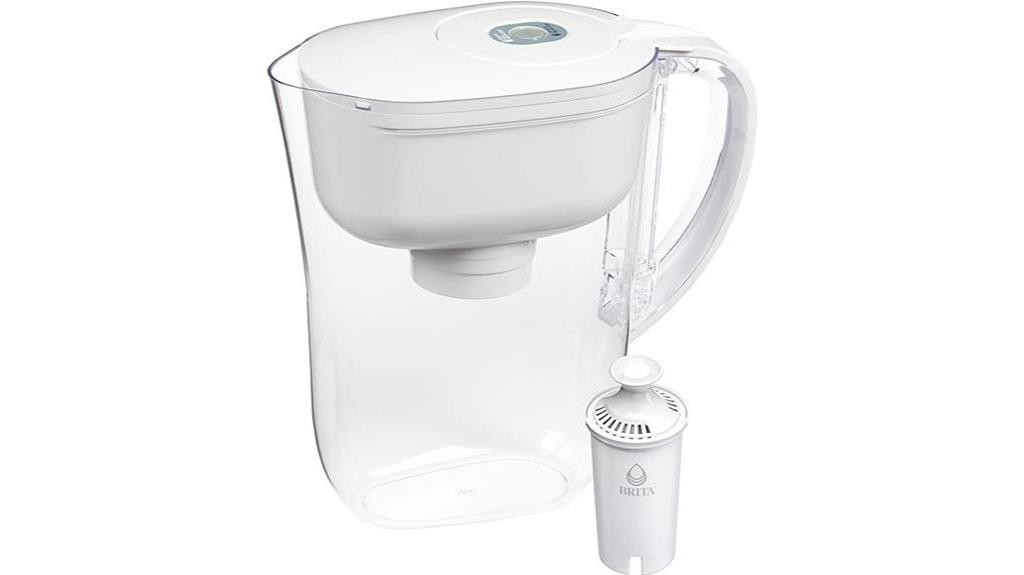Did you know that the canned clams you’ve been enjoying may contain a dangerous chemical? A recent study by the FDA has found that PFAS, a man-made chemical linked to health problems like cancer and thyroid issues, has contaminated canned clams.
Every sample of canned clams tested had high concentrations of PFAS, with levels that represent a health concern. This news is shocking and concerning, given that canned clams are a popular ingredient in many seafood dishes.
PFAS contamination is a serious issue that affects not only canned clams but also non-stick cookware, water-repellent clothing, and some food packaging. PFAS exposure has been linked to a range of health problems, including developmental effects, liver damage, and immune system dysfunction.
With canned clams being a common ingredient in seafood dishes, it is crucial to understand the dangers of PFAS contamination and take steps to protect yourself from exposure. In this article, we will explore the sources of PFAS contamination, how it affects your health, and provide recommendations for consumers to minimize their exposure to this harmful chemical.
Key Takeaways
– PFAS are man-made chemicals that are stable and do not break down easily in the environment.
– Canned clams have been found to contain high concentrations of PFAS, which can be harmful to human health and have been linked to cancer, thyroid problems, reproductive and immune system dysfunction.
– There is no established standard for safe levels of PFAS in food, and the FDA recommends limiting consumption of canned clams.
– To protect yourself, avoid canned clams completely due to their PFAS contamination and educate yourself about where PFAS might be found in other foods and products.
PFAS and Their Effects
You should be aware of the harmful effects of PFAS and how they can enter your food supply through contaminated soil and water, livestock feed and water, food packaging, and processing equipment. PFAS exposure has been linked to cancer, thyroid problems, reproductive and immune system dysfunction.
The lack of established standards for safe levels of PFAS in food makes it difficult to know whether the concentrations found in canned clams are safe for consumption. The FDA found PFAS in canned clams during their most recent food safety testing program, and the concentrations found represent a health concern.
PFAS regulation is an ongoing issue, with the FDA and other regulatory bodies monitoring and testing for PFAS in various products. The EFSA sets a limit for combined exposure to 4 PFAS compounds in food, and according to their standard, you should limit your intake of canned clams to once every 12 weeks.
The Maine CDC has also developed a guide to inform the public what levels of PFAS in fish they can safely consume. It’s important to stay informed about food-related dangers posed by PFAS contamination and make informed choices about which fish and seafood you can safely consume.
Sources of Contamination
One way that PFAS can enter the food supply is through contamination of soil and water sources. These chemicals are very stable and do not break down easily, so they can persist in the environment for many years. As a result, they can accumulate in the soil and water, and eventually enter the food chain.
PFAS can also be found in livestock feed and water, which can lead to contamination of meat, dairy products, and eggs. Another source of PFAS contamination is food packaging and processing equipment. Many food containers, such as pizza boxes and microwave popcorn bags, are coated with PFAS to make them grease-resistant and waterproof.
When food is heated in these containers, the PFAS can migrate into the food. Similarly, food processing equipment that includes PFAS can also contaminate food. It’s important to be aware of these potential sources of PFAS exposure and choose your food and packaging carefully.
PFAS in Canned Clams
If you eat seafood, it’s important to be aware of the potential sources of PFAS contamination, including canned shellfish like clams.
The FDA found high concentrations of PFAS compounds in every sample of canned clams they tested, with concentrations ranging from 4,026 to 22,943 parts per trillion. This poses health risks as PFAS exposure has been linked to cancer, thyroid problems, reproductive and immune system dysfunction.
While the FDA couldn’t say for certain whether PFAS levels in canned clams are dangerous, it’s recommended to avoid canned clams completely due to their PFAS contamination.
If you’re looking for seafood alternatives that are less likely to be contaminated with PFAS, consider choosing fish and shellfish that are wild-caught and not farm-raised.
Additionally, it’s important to regularly test your water for PFAS contamination and avoid food packaged in PFAS-containing materials.
The Maine CDC has developed a guide to let the public know what levels of PFAS in fish they can safely consume, and the EFSA sets a limit for combined exposure to 4 PFAS compounds in food. According to the EFSA standard, you should limit your intake of canned clams to once every 12 weeks.
Stay informed about food-related dangers posed by PFAS contamination and make informed choices about which fish and seafood you can safely consume.
Recommendations for Consumers
To protect yourself from potential PFAS contamination in your seafood, regularly test your water and choose wild-caught options over farm-raised. It’s also recommended to avoid canned clams completely due to their high levels of PFAS compounds. Instead, consider alternatives like fresh clams or other seafood options that are known to have lower levels of PFAS.
This may have an impact on the seafood industry, as consumers become more aware of the potential health risks associated with PFAS contamination. It’s important to stay informed about the latest research and testing results on PFAS contamination in seafood and other foods.
Check for additional test data before purchasing any seafood products, and make informed choices about what you consume. By taking these steps, you can help protect your health and reduce your exposure to harmful PFAS compounds.
Conclusion
So, now that you know about the dangers of PFAS contamination in canned clams, what can you do to protect yourself?
First, limit your consumption of canned clams and opt for fresh clams instead. Additionally, avoid using non-stick cookware and water-repellent clothing that may contain PFAS.
When purchasing food packaging, look for products that are labeled PFAS-free. Finally, advocate for stricter regulations on PFAS in consumer products and support companies that are committed to reducing their use of PFAS.
By taking these steps, you can minimize your exposure to this harmful chemical and protect your health. Stay informed and stay safe!




